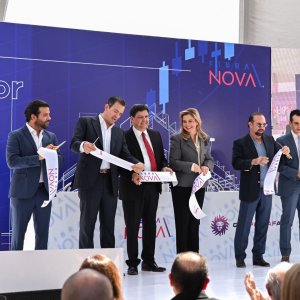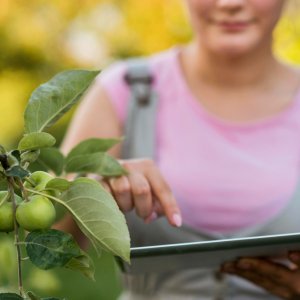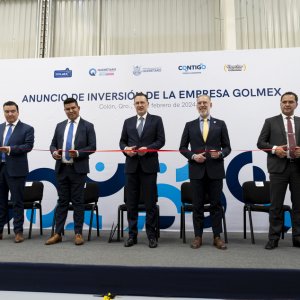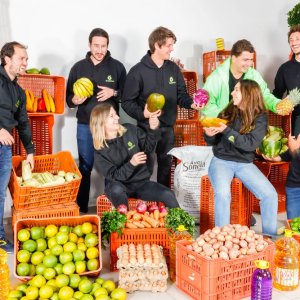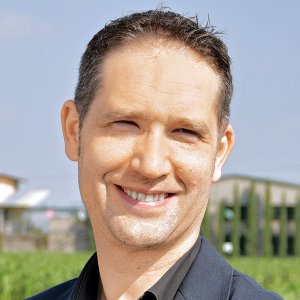Food Waste: A Problem That Needs All Our Attention

STORY INLINE POST
Food demand is projected to more than double by 2050. Meanwhile, over one-third of produced food is thrown away. How can we meet the growing demand without further exploiting our planet?
Every year in Mexico, we toss away over 20 million tons of food throughout the entire supply chain. This is food that is still in ideal conditions for human consumption.
To put this into perspective, remember the cargo ship, Ever Given, that got stuck in the Suez Canal? Now imagine 100 of these and you have the equivalent weight of the amount of edible food wasted yearly.
The consequences are drastic. The production of food is complex, time-consuming and requires scarce, valuable and environmentally harmful resources. On a global level, it is estimated that 10 percent of greenhouse gas emissions are linked to food waste. That’s equivalent to nearly twice the annual emissions produced by all the cars driven in the US and Europe, or four times more than the entire aviation industry.
Along the way, we are not just wasting edible food. We waste important resources, such as soil, water and energy, which are necessary for growing our food. In addition, we erode biodiversity because more land is used than necessary for agricultural production, reducing the natural habitat for plants and animals.
But it does not stop there. Ultimately, it exacerbates the problem of global food security. As a third of all food is wasted not only in Mexico but worldwide, food waste increases the demand for food. Due to the scarce availability of ground to grow, this causes a price increase in the world market. This price increase affects the poorest, exacerbates their poverty and means that in many regions of the world there is not enough food for people to eat.
A Wasteful Supply Chain
Unlike the US, most food in Latin America is wasted prior to the consumption stage. A critical moment is post-harvest. Small to midscale farmers have a hard time bringing their products to market. Large-scale agriculture often harvests too much, ending up with surplus production. In addition, the existence of long chains of intermediaries and the distances that food travels without the right conditions increase food losses.
Another major issue arises at the distribution stage in relation to industry standards around aesthetics. Fruits and vegetables must meet certain criteria around size, weight, shape and color, among others, even though these attributes have no correlation with the safety, freshness or quality of the food. It is not only the retailer setting this standard; it also stems from consumer behavior. Think about it: How many times have you chosen the “prettier” and “shinier” apple at the supermarket?
Similar issues exist with other grocery items. Edible food items are tossed away due to reasons that include short shelf life, damaged packaging, labeling errors and design changes.
Further, retailers have a hard time forecasting exact demand, which leads to surplus purchases and thus more costs and waste.
Every Contribution Counts
As part of the 2030 Agenda, the UN member states have defined the goal of reducing food waste by half by 2030. Mexico has also signed the 2030 Agenda and thus the Sustainable Development Goals (SDGs).
At Perfekto, we aim to tackle this problem by offering a subscription box of fresh fruits and veggies that are at risk of ending up wasted due to imperfections or surplus production.
Our approach creates a market for “undervalued” products, which helps reduce food waste, creates more upside for farmers and ensures we make use of the invested resources as food demand grows. The subscription model allows for an exact supply-and-demand match to avoid surplus purchases, while also shortening the supply chain from producer to consumer.
This ultimately also results in a win for consumers, facilitating more sustainable purchasing decisions, while still saving time and money.
This is just one example of how we can start contributing a little to a more sustainable future. Fortunately, there is an increasing number of companies and entrepreneurs working on different approaches to address the problem, from stickers that help increase the shelf-life of fruits to apps that save already-made meals from restaurants.
On the other hand, consumers are becoming more conscious of why adapting purchasing habits in favor of society and the environment matters. Communities are being formed that exchange tips and tricks on sustainability. Experts in the field have become influencers, creating content and sharing insights with followers on how to minimize one’s carbon footprint.
But we are still at a very early stage, especially in Latin America. To accelerate it, we should all strive to contribute, even if with small changes or decisions. We sometimes might think that our actions are insignificant but if we unite as a community, our compound impact will have a significant and direct positive impact on our environment.
So how about starting to make a change by selecting the not-so-perfect-looking apple when you next go grocery shopping?








